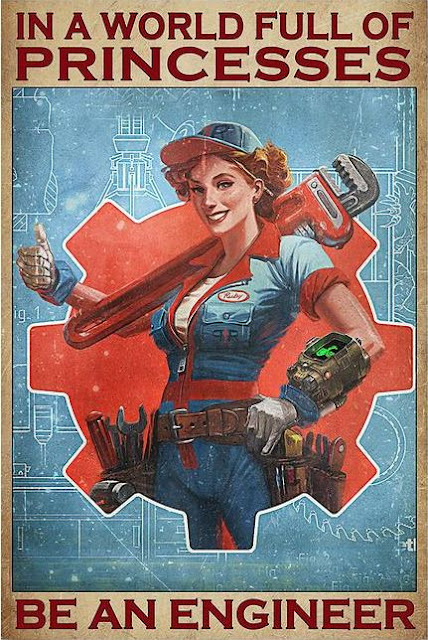People have a notion that engineering is a guys' thing, so whenever a young woman takes up this trade, whether it's electronics, mechanical, power, civil, etc., it seems to raise an eyebrow with an 'are you serious?' kind of expression. Truth is, in my thirty over years as an electronics engineer, I have seen many women working on test benches than I could care to count, from my air force days to the last company that I worked in.
So what is it about engineering that attracts women, apart from the fact that some people are the handy type who like to work or create things with their hands? I remember there was one time while I was dismantling an airborne electronic module with many screws, carefully laying out the parts and bolts on a work bench, when a lady programmer who was quietly watching me remarked, "I just love to watch men at work taking things apart. It's just so... man!"
Well, I don't know if I can say the same if I were to watch a woman does the same thing, though. "Err... you know, watching you taking things apart is such a... beautiful thing!" Better not risk myself getting whammed on the head with a size 32 spanner!
Anyway, if you're a lady engineer who happens to read this post, I would love to hear your take on this. Who knows, it may just inspire me to write a book (grin!)









No comments:
Post a Comment